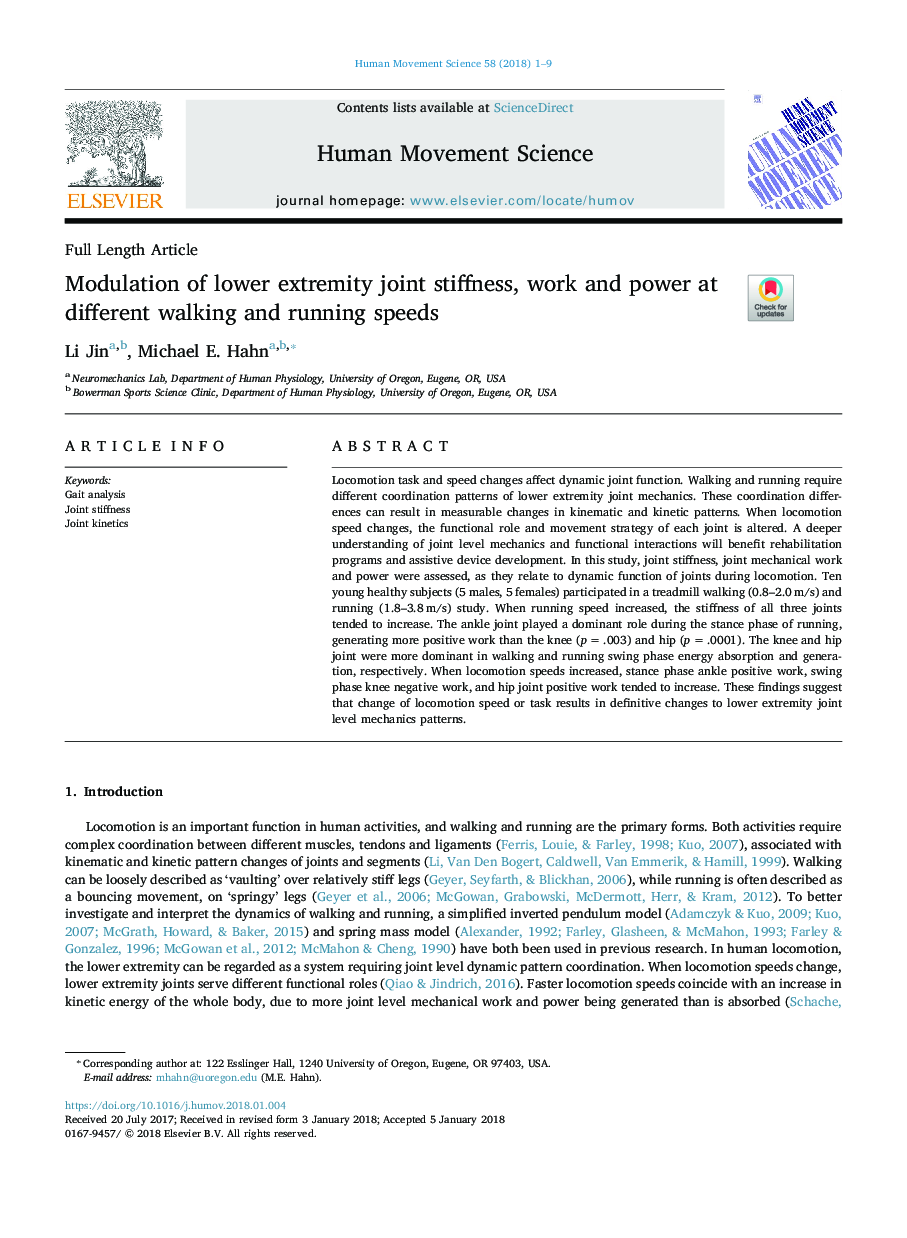| Article ID | Journal | Published Year | Pages | File Type |
|---|---|---|---|---|
| 7290903 | Human Movement Science | 2018 | 9 Pages |
Abstract
Locomotion task and speed changes affect dynamic joint function. Walking and running require different coordination patterns of lower extremity joint mechanics. These coordination differences can result in measurable changes in kinematic and kinetic patterns. When locomotion speed changes, the functional role and movement strategy of each joint is altered. A deeper understanding of joint level mechanics and functional interactions will benefit rehabilitation programs and assistive device development. In this study, joint stiffness, joint mechanical work and power were assessed, as they relate to dynamic function of joints during locomotion. Ten young healthy subjects (5 males, 5 females) participated in a treadmill walking (0.8-2.0â¯m/s) and running (1.8-3.8â¯m/s) study. When running speed increased, the stiffness of all three joints tended to increase. The ankle joint played a dominant role during the stance phase of running, generating more positive work than the knee (pâ¯=â¯.003) and hip (pâ¯=â¯.0001). The knee and hip joint were more dominant in walking and running swing phase energy absorption and generation, respectively. When locomotion speeds increased, stance phase ankle positive work, swing phase knee negative work, and hip joint positive work tended to increase. These findings suggest that change of locomotion speed or task results in definitive changes to lower extremity joint level mechanics patterns.
Related Topics
Life Sciences
Neuroscience
Cognitive Neuroscience
Authors
Li Jin, Michael E. Hahn,
